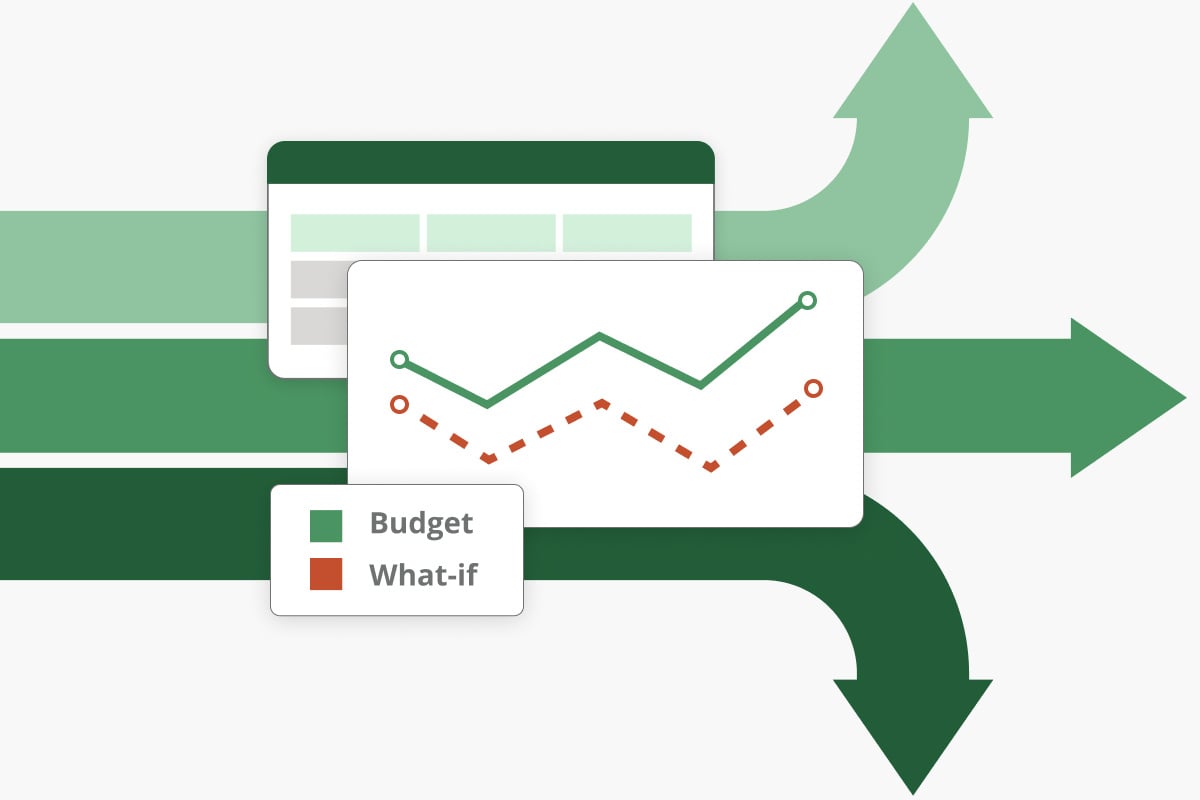Accounting allows us to comprehend an organization's historical financial statements. However, forecasts based on those financial statements let us analyze how a firm will perform under various assumption types. We can do this using a three-statement financial model.
These statements enable financial experts and industry insiders to visualize an organization's operational and financial decisions. That includes:
- FP&A professionals
- Corporate development professionals
- Investment bankers
- Institutional investors
- Sell-side equity research
- Private equity
Well-built three-statement financial models enable these professionals to see how various business activities work together to impact the future bottom line. These statements can be used everywhere from financial reporting, to financial closing. That makes it easier to see how these corporate financial decisions affect overall business performance.
Key Takeaways:
- A three-statement financial model is an integrated model that forecasts an organization's income statements, balance sheets and cash flow statements.
- The three core elements (income statements, balance sheets and cash flow statements) require that you gather data ahead of performing any financial modeling.
- There are several steps to building a three-statement financial model, including key steps like inputting historical data, defining parameters and conducting your forecasting.
What Is a Three-Statement Model?
A three-statement financial model, also called the 3 statement model is an integrated model that forecasts an organization's income statements, balance sheets and cash flow statements. It is the foundation on which we can build additional (and more advanced) models. These include merger models, DCF models, leveraged buyout (LBO) models and various other financial model types, including those seen in the chart below.

Source: Corporate Finance Institute
3 Core Elements of a Three-Statement Finance Model
These integrated models are powerful tools because they allow you to modify assumptions in one part of the model to see how it accurately and consistently influences the other areas of the model. Yet, before you begin, you must gather the necessary data points before conducting financial modeling.
At a minimum, you must gather an organization's most current SEC filings, equity research reports and possibly press releases. Information can be more difficult to locate for private companies than for public ones. Financial reporting requirements differ in other countries.
A three-statement model includes various outputs and schedules. Yet, these three key elements accurately capture the association of the multiple line items across the financial statements.
1. Income Statement
Income statements depict a business's profitability. These statements are formatted from left to right, with no less than three years of historical results. That provides historical ratios and growth rates based on our forecasts.
Inputting data from historical income statements is the first step in creating three-statement financial models. The process includes manual data entry from either a press release or the 10K. You can also use an Excel plugin to drop historical data directly into your program.
Financial planning and forecasting normally start with a revenue forecast preceded by various expense forecasting. The net result predicts the company's earnings per share and overall income.
These statements cover a specified segment, such as a quarterly or annual period. For more information, check out how we can help income statement forecasting with our revenue planning software, or try creating one yourself with our free income statement template.
2. Balance Sheet
Income statements display operating results over a specified time. However, the balance sheet is unlike the income statement. It is a company snapshot after any given reporting period.
This sheet exhibits the organization's assets and resources and the funding for those resources, such as a shareholder's equity and liabilities. Entering historical balance sheet data is like inputting income statement data. You do this either manually or using a plugin for Excel.
Revenues are what drive the operating assumptions. The operating assumptions drive the balance sheet you make based on the income statement.
Furthermore, operating and revenue forecasts drive capital expenditures, working capital items and various other items. Think of the balance sheet as the cart and the income statement as the mule.
In this sample below, see a financial statement model for Apple, formatted using a standard Excel document. Excel is an excellent tool for creating reports.
However, there are better solutions to assist organizations with their FP&A processes. We recommend integrating a system powered by Excel but with additional features that ensure accurate forecasting.

Source: Wall Street Prep
3. Cash Flow Statement
Lastly, we will look at the three-statement financial model's final core element: the cash flow statement. Entering results from historical cash flow statements is unnecessary before forecasting. That is due to a year-over-year pure reconciliation of the changes in the balance sheet from the cash flow statement.
We should reference each individual line item of the cash flow statement from elsewhere within the financial model. When we construct the cash flow statement correctly, the balance sheet will balance.
To generate a forecasted cash flow statement, a cash flow proof should be created. You can create this by using the change between the current and forecasted balance sheet accounts. The ending cash flow statement balance should reconcile with the forecasted cash balance on the balance sheet.
How To Build a Three-Statement Financial Model In 7 Easy Steps
You must take several steps to build a three-statement financial model. Some experts argue which steps are a top priority. A few industry leaders will claim there are only five steps in this process.
However, we recommend that you take these seven steps:
1. Enter historical financial data into an Excel-formatted platform
2. Define the predictions that drive forecasting
3. Predict the income statement
4. Predict capital investments and assets
5. Predict financing activity
6. Predict the balance sheet
7. Complete a cash flow statement
Your Best Source for Three-Statement Modeling
Plan for any scenario.
At Vena, we offer an entire FP&A ecosystem that allows you to create three-statement financial models you can run daily, weekly, monthly, quarterly and annually. We use Excel to format our platform, making it user-friendly and easy to integrate.
Our financial modeling software allows you to quickly analyze the impact of your business decisions to help you plan with confidence.
We offer the best source for three-statement modeling at Vena. Our software includes a Power BI integration, ad-hoc reporting tools, and executive-level reporting templates so that you can drive real-life growth by creating real-time reports.










